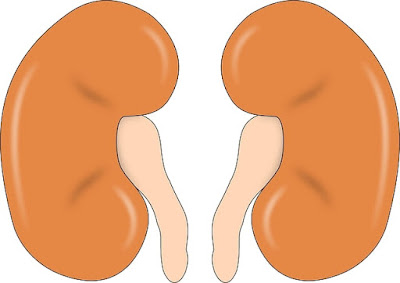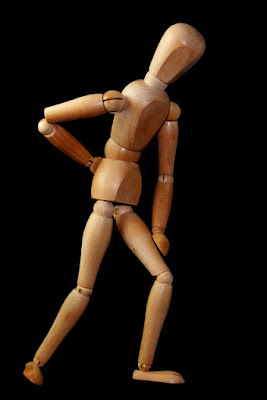Bosniak Cyst/Renal Cyst/Kidney Cyst: Risk of Cancer or Not
Bosniak Cyst/Renal Cyst/Kidney Cyst: Risk of Cancer or Not
Hello
Friends!
Hope
you are getting benefits from my previous posts. Today we will discuss about
Bosniak Cyst. Around 20 million people have Chronic Kidney disease where
patients experience a gradual deterioration of Kidney function, the end result
of which is Kidney Failure. Healthy eating plays an important role in reducing
risk of getting CKD (Chronic Kidney Disease). “Go Green, have more fiber to
prevent Kidney Failure”. Let’s discuss about Bosniak Cyst and we will
understand the relation between Bosniak and Renal Cyst.
Cyst:
Cyst
is a Membranous Sac or Cavity of abnormal character in the body containing
fluid. Cysts are filled with liquid, semisolid and gaseous material. Cysts
occur within tissue and can affect any part of the body. Cysts vary in size.
The outer portion of a Cyst is called Cyst Wall. If the Sac is filled with Pus
it is not a Cyst, it is an Abscess.
Bosniak Cyst:
Bosniak
Cyst is classification system of Renal Cystic Masses. It is named after Morton
A Bosniak who was Professor in Radiology Department at New York University,
Langone School of Medicine. The Bosniak classification for Renal Cysts was
developed in late 1980s for management of complex Cystic Renal Lesions. Bosniak
classification system has also been utilized with some advantages for magnetic
resonance imaging.
Relation between Bosniak Cyst and Renal Cyst:
A
Renal Cyst is a fluid collection in a Kidney. There are several types of Renal
Cysts on basis of Bosniak classification. Majority of Cysts are Benign and some
are Cancerous and are removed by surgical procedure called Nephrectomy. Many
Renal Cysts are seen in Cystic Kidney Diseases which include Polycystic Kidney
Disease and Medullary Sponge Kidney.
Bosniak Classification System:
Renal
Cysts are classified into 5 groups:
1.
Bosniak Type I Cyst:
(a)
It is a simple Cyst.
(b)
These Cysts are located in Renal Cortex.
(c)
These Cysts are very frequent and do not need follow up or specific treatment.
(d)
No Septa, Calcification's or Solid components are found in these Cysts.
(e)
These are simple Cysts with a hair line thin wall, water attenuation and no
enhancement.
(f)
The Malignant or Cancerous chance in these Cysts is 0%.
(g)
Size of Cyst: 5-10mm in diameter.
2.
Bosniak Type II Cyst:
(a)
Bosniak Type II Cyst is minimally complicated.
(b)
This Cyst has thin Septa (less than 1mm) with hair line in which no measureable
enhancement may be appreciated.
(c)
Short Segment of slightly thickened Calcification may be present in wall or
Septa.
(d)
High attenuation: Uniform in Lesions (less than 3cm) that are sharply
marginated and don’t enhance.
(e) Surgical approach is not mandatory in
Bosniak Type II Cyst.
(f)
0% chance for Cancer with this Cyst.
3.
Bosniak Type II-F Cyst (F means Follow):
(a) Septa: Multiple hair line thin in which no measurable enhancement of Septum or wall is appreciated.
(a) Septa: Multiple hair line thin in which no measurable enhancement of Septum or wall is appreciated.
(b) Minimal thickening of Septa(less
than 25% of wall visible) or Septa may contain calcification. It can be thick,
nodular but no measurable contrast enhancement.
(c) No enhancing soft Tissue
components.
(d) Intra-Renal: Renal Lesions
(>3cm). It is mainly hyper dense Cyst mostly intra-renal.
(e) Bosniak Type II-F Cyst suggests a slight risk
of Malignant Cancer.
(f) The chances of Cancer with
this Cyst are 5%.
(g) This Cyst requires follow up,
needs Ultrasound/CT scan/MRI.
4. Bosniak Type III Cyst:
(a) Measurable enhancement is
present with Cystic mass, thickened irregular or smooth walls or multiple
Septa.
(b) These Cysts can be multiple
in natures.
(c) Lesions with course
calcification.
(d) 55% chances of Malignant
Cancer with this Cyst.
(e) Multiple Septa (>1mm)
without an intra cystic nodular lesion.
(f) Treatment: Partial
Nephrectomy or Radio Frequency Ablation in elderly or poor surgical candidates.
5. Bosniak Type IV Cyst:
(a) Enhancing soft tissue
components.
(b) Clearly Malignant Cystic
Masses.
(c) Soft tissue is independent of
wall or Septa.
(d) Solid mass with a large
Cystic or a Necrotic component.
(e) 100% Malignant Cancer.
(f) Treatment: Partial or Total
Nephrectomy.
Note: Ablation Therapy is a type of Minimally Invasive procedure Doctor’s used to destroy abnormal tissue that occurs in Kidney.
Causes of Bosniak Cyst/Renal Cyst/Kidney
Cyst:
1. It is not clear what causes Bosniak, Renal or Kidney Cysts. According to one theory Bosniak or Renal Cysts develop when the surface layer of kidney weakens and forms a pouch that is Diverticulum. The pouch then fills with fluid, detaches and develops into a Cyst.
2. Other cause of Bosniak, Renal
or Kidney Cysts can be inherited disease called PKD (Polycystic Kidney
Disease). PKD is a genetic disorder characterized by clusters of cysts that can
impair kidney function.
Symptoms of PKD:
- High Blood Pressure.
- Pain in back and side.
- Blood in urine.
- Frequent Kidney Infections.
Symptoms of Bosniak Cyst/Kidney Cyst/Renal Cyst:
These Cysts are common in old aged people. Typically they don’t cause any symptoms. Rare symptoms may include:
1. Fever due to infections.
2. Pain or Tenderness between
Ribs and Pelvis.
3. Upper Abdominal Pain.
4. Changes in urinary habits.
Tests to diagnose Bosniak/Renal or Kidney Cysts:
1. Abdominal and Pelvic
Ultrasound: These ultrasounds are performed to take pictures of Kidneys and
confirm the presence of fluid inside the Renal Cysts.
2. Abdominal and Pelvic CT scan:
CT scan helps to distinguish Benign Cysts from Tumors in the Kidneys. CT scan
is done by using contrast material.
3. MRI: MRI uses a magnetic field
and radio frequency pulses to produce detailed pictures of kidneys. In MRI also
contrast material is injected in the vein.
4. CT Enterography (latest
technique): CT enterography uses special X-ray equipment and an injection of
contrast materials after the ingestion of liquid to produce detailed images of
structures within abdomen and pelvis. CT images provide greater detail than
traditional X-rays particularly of soft tissues and blood vessels.
5. ACR Test: ACR is Albumin to
Creatinine ratio. Albuminuria is presence of albumin in urine and a marker of
kidney damage. ACR is first method of preference to detect elevated protein,
measuring urinary ACR in a spot urine sample.
Normal ACR range - 30 to 300mg/g.
6.
GFR Test: GFR Test is Glomerular Filtration Rate. GFR is a blood test to
measure how much blood your kidneys filter each minute.
Normal Range for GFR in Men=
100-130 mL/min/1.73m2
Normal Range for GFR in women=
90-120 mL/min/1.73m2
7.
Serum Creatinine: Creatinine ia a waste product and is present at higher level
in blood of people with kidney dysfunction.
Treatment for Bosniak/Renal/Kidney Cysts:
Renal
Cysts generally don’t require treatment unless they are causing harm to kidney
function like blocking blood flow or urine flow.
1.
Sclerotherapy: It is also known as Percutaneous Alcohol Ablation. Sclerotherapy
involves insertion of a long needle through the skin and into the cyst under
ultrasound guidance. The doctor will drain the cyst and fill it with an alcohol
based solution that causes the tissue to harden and shrink, reducing the chance
of recurrence. The procedure is usually performed with local anesthesia.
2.
Surgery: For larger Cysts, a surgeon will make a small incision and access the
cyst with a laparoscope. The surgeon will drain the cyst and burn or cut away
its outer layer. Laparoscope surgery requires general anesthesia.
Who are at higher risk of Bosniak/Renal/Kidney Cysts?
1.
Age factor older than 50 years.
2.
More common among men.
3.
Renal dysfunction.
4.
Hypertension: Hypertension cause renal dysfunction which results in Renal
Cysts.
5.
Smokers.
6.
Inherited Cystic Kidney Disease.
7.
Cardiovascular disease.
(Also
Read: Heart Attack).
8.
Presence of protein in urine (PKD2 Protein).
9.
Diabetic Patients.
Complications due to Bosniak/Renal/Kidney Cysts:
1.
Infection in the Cyst.
2.
Burst Cyst.
3.
Blockage of urine out of kidney.
4.
High blood pressure.
5.
Kidney failure by age 60.
When to see a Doctor?
If you feel any of the following symptoms:
1.
Vomiting.
2.
Severe pain.
3.
Fever or chills.
4.
Visible blood in urine.
5.
Nausea.
6.
Loss of Appetite.
7.
Fatigue or Weakness.
8.
Sleep problems.
9.
Shortness of breath.
Foods to avoid during Bosniak/Renal/Kidney Cysts:
1.
Avoid high potassium enriched food.
2.
Bananas.
3.
Salty Foods.
4.
Fast Foods.
5.
Processed Meat.
6.
Bran and whole grains.
7.
Most dairy products.
8.
Potatoes.
9.
Nuts.
10.
Spinach.
11.
Tomatoes.
12.
Cantaloupe.
13.
Vegetable Juice.
Natural Remedies:
1.
Low Potassium foods.
2.
Apples.
3.
Blackberries, Blueberries, Strawberries and Raspberries.
4.
Broccoli.
5.
Carrots.
6.
Kale.
7.
Cabbage.
8.
Cucumbers.
9.
Watermelon.
10.
Citrus fruits like oranges, pineapple.
“Kidney
is a silent organ but ignoring it can lead to disastrous consequences”.
If you like this
article then please share with your friends and family and also like my
Facebook page…
Link below:
Please subscribe my
Blog (Sidhuz Vlog) by
click on the below "Bell Icon" for
latest updates.......
Health Disclaimer
This blog provides general
information and discussions about health and related subjects. The information
and other content provided in this blog, or in any linked materials, are not
intended and should not be construed as medical advice, nor is the information
a substitute for professional medical expertise or treatment.
If you or any other person has a
medical concern, you should consult with your health care provider or seek
other professional medical treatment. Never disregard professional medical
advice or delay in seeking it because of something that have read on this blog
or in any linked materials. If you think you may have a medical emergency, call
your doctor or emergency services immediately.
The opinions and views expressed on
this blog and website have no relation to those of any academic, hospital,
health practice or other institution.














No comments:
Please do not enter any spam link in the comment box.